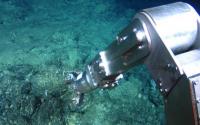Deep sea mining: coming soon to an ocean near you

The depletion of resources on land together with the increase in resource demand and the parallel development in technologies for deep sea exploration have brought the issue of deep-sea mining to the forefront of political, industrial and scientific debate.
Quicktabs: News
Indeed, at a summit on Deep-Sea Mining in London two months ago Mark Brown, Minister of Minerals and Natural Resources of the Cook Islands, announced that the Cook Islands is embracing deep-sea mining as a pathway to multiply the country’s gross domestic product by up to 100 fold, as they assessed that the Cook Islands' 2 million Km2 exclusive economic zone contains 10 billion tons of manganese nodules, which contain manganese, nickel, copper, cobalt and rare earth minerals used in electronics. Negotiations are under way between the Cook Islands and companies in the UK, China, Korea, Japan and Norway, towards granting the first tenders within a year.
These facts suggest that we may soon face and underwater gold rush, but in most citizen’s minds deep-sea mining is still something for sci-fic movies. Much to the contrary, the technology for deep-sea mining is not something of the future but it is largely existing. A deep-sea mining operation consists of a mining support platform or vessel; a launch and recovery system; a crawler with a mining head, centrifugal pump and vertical transport system; and electrical, control, instrumentation and visualization systems. Companies such as Lockheed Martin, Soil Machine Dynamics, IHC Mining and Bauer or Nautilus Minerals are developing vehicles for deep-sea mining, pledging they are in the position to readily develop techniques to operate down to 5,000 metre depth. Indeed, the submarine vehicles required are already in existence and their operations are described in compelling animations.
